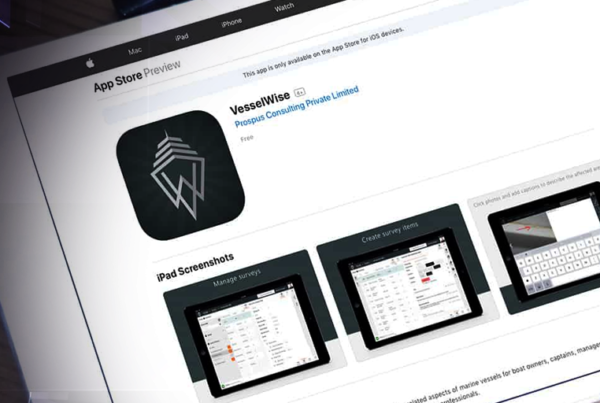In this article, we look to highlight why it would become necessary to have a more unified sharing function available to everyone to make the idea of a truly connected world a practical reality. Sharing should be a commodity available to all.
Background
The Internet of Things promises to create an interconnected world of billions of uniquely identifiable devices and objects around us. It will expand our existing network by adding more internet-enabled devices to it. In addition, it will also bring things that previously never interacted via the web e,g, our curtains, doors, microwave ovens, toothbrushes, shoes, and t-shirts, into the network of the internet – the internet of everything. So potentially, everything will be able to operate through web functionality. With more devices, there will be more corresponding data that gets shared for those devices to be useful and make a difference or add value to our existing ways of living. Hence, sharing must be an inextricable element of the internet of things for it to transform the way we currently interact via digital technology. This is where the primary challenge occurs.
The problem
We share explosive amounts of data over the internet. Every minute of every day we create more than 204 million email messages, over 2 million Google search queries, 48 hours of new YouTube videos, 684,000 bits of content on Facebook, more than 100,000 tweets[1}, Instagram users share 3,600 new photos, and Tumblr sees 27,778 new posts published[2}.
We send and receive data in various different formats in the form of text, photos, and videos, and through different channels such as Dropbox, Google Drive, OneDrive, etc. or our professional accounts like Outlook etc. This data is produced by users, primarily to be shared with and for the consumption of other users. The challenge however that is commonly faced by most of us is that we have to go through different interfaces, key-in different usernames and passwords, download supporting applications and so on just to access and collate all the pieces of information coming from various different sources. Now as devices and form factors grow in numbers and types, and data continues to grow at such tremendous rates as it is growing, dealing with messages and signals coming from numerous connected devices around us would almost become an unpalatable affair. The global Internet population now represents 2.1 billion people, and with every website browsed, status shared, and photo uploaded, we leave a digital trail that continually keeps adding to the growth of data[2}.
Discussion
Sharing requires a high degree of standardization. If I receive messages over numerous different form factors that require me to learn different user interfaces and functionalities, I will most likely feel discouraged to accept those signals or to want to use such devices that send me those signals. For instance, I simply pair my plain Samsung Plasma to my Apple TV instead of using an internet-enabled Smart TV because I do not want to go through an additional user interface for accessing plain media functionality which I find way easier to access using my existing interface.
Sharing and APIs: An application programming interface (API) is a set of routines, protocols, and tools for building software applications. The practice of publishing APIs has allowed web communities to create an open architecture for sharing content and data between communities and applications. In this way, content that is created in one place can be dynamically posted and updated in multiple locations on the web[3}. So for example, Amazon.com can create a shopping cart, add a new product, change that product’s image, and process your credit card using APIs. So an API is basically making those functions available to people outside of Amazon.
Modern APIs are slow and costly. Programmers develop the functionality once, only then do they decide later to make their functions available to others via the API development process. But that limits our ability to share data owing to cost and time factors, A good API makes it easier to develop a program by providing all the building blocks and programmers can then put the blocks together. So if we automatically create and provide access to developer communities to an API the first time we develop, imagine how much faster and efficient development and sharing would become.
Conclusion
The digital ecosystem will continue to expand. Objects connected via the internet will grow massively and the data they produce every minute will consequently grow exponentially. In this world, flooded with devices and surrounded by data, sharing would pose incremental challenges. But if sharing is not available to people, it will defeat the very objective of the internet of things – to connect everything around us. Multiple devices, interfaces, portals, usernames and passwords to log in etc. only cause digital intention obstruction and technology fatigue. Wouldn’t it make sense if everything could be shared in the same way as much as possible instead of following different and unique procedures, processes and protocols?
In the digital ecosystem, everything starts with a database wherein every piece of data is stored. But on top of that database, there is all that massive code and logic outputting the data. What if our developers – who are our modern day farmers harvesting our digital food for us to consume – could have access to one simple way to get into the database, bypassing all the gates and restrictive layers? Collaborative data sharing can create synthesized value for our sharing model which is restricted and limited. For the economy of a many billion connected devices, sharing will have to be a desegregated part of the IoT network.
Citations
- Webopedia: “How Much Data Is Out There?”. http://www.webopedia.com/quick_ref/just-how-much-data-is-out-there.html Accessed: Thursday, Feb 12th, 2015
- Visual News: “How Much Data Is Created Every Minute” http://www.visualnews.com/2012/06/how-much-data-created-every-minute/ Accessed: Thursday, Feb 12th, 2015
- Wikipedia: “APIs”. http://en.wikipedia.org/wiki/Application_programming_interface Accessed: Thursday, Feb 13th, 2015



























